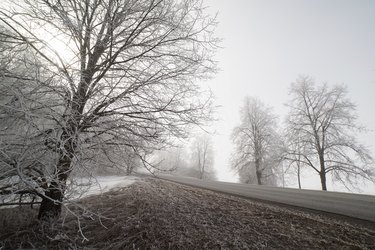
Trees that lose their leaves in the winter are called deciduous trees. They lose their leaves to conserve moisture and reduce the amount of energy they must consume in order to stay alive. The leaves of some deciduous trees turn bright colors before they drop to the ground, while others simply fade or turn brown. Environmental factors and the genome of the tree affect how quickly the leaves fall.
Time Frame
Video of the Day
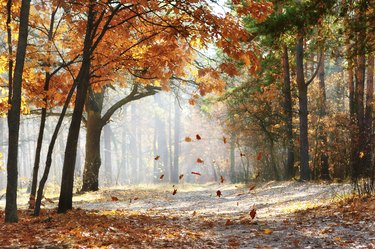
As the days get shorter, starting around the autumnal equinox, there is less light, heat and water for photosynthesis. Photosynthesis utilizes chlorophyll as it provides energy for the tree. With less hours of sunlight, the chlorophyll content of the leaves decreases and the green color no longer hides the yellows, oranges and reds that are also in the leaves, so we see bright autumn colors before the leaves fall. Trees with a northern exposure often will change color and lose their leaves earlier than the same types of trees that are nearby but getting more hours of sunlight.
Video of the Day
Trees respond to the duration of daylight, and will start to lose leaves when the days are shorter even if temperatures have not yet fallen. Different species respond to slightly different lengths of days. A tree living under a street light will have its cycle disturbed by the light.
Chemical Signals
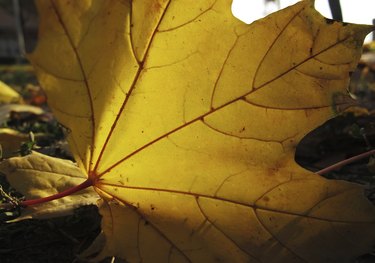
Leaves fall because of chemical changes that occur within the tree sap. First the veins transporting sap into and out of the leaves slowly close down. Deciduous trees produce chemicals, mainly ethylene and abscisic acid, that basically cut the link between the leaf and the tree's nutrient system. As the veins close down, a layer of cells, the abscission layer, forms at the base of the leaf stem, and when it is complete, the leaf falls from the tree.
Stress Factors
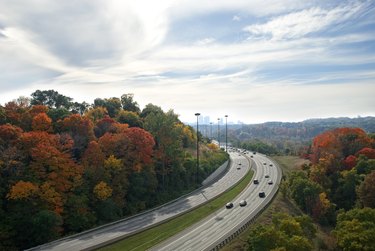
Environmental factors also have an impact on when trees lose their leaves. Trees in cities experience a variety of man-made stressors such as air pollution, salt damage (from both home water softeners and use of salt to melt snow and ice), industrial pollution (heavy metals introduced into the soil) and herbicides used to kill weeds and unwanted plants near the roots of the tree. All of these factors can influence when an individual tree will lose its leaves. For example, a tree planted closer to a busy street may lose its leaves earlier than a tree of the same type in a park few blocks away.
Species

All deciduous trees shed their leaves. Some species like maple, beech and aspen are noted for their spectacularly bright fall color. Others, like the oak and chestnut are less colorful. Different species form the abscission layer at different rates, causing the leaves to fall at different times. The oak is unusual because it does not completely form an abscission layer, so oak leaves often remain attached to the tree throughout the winter.
Environmental Factors
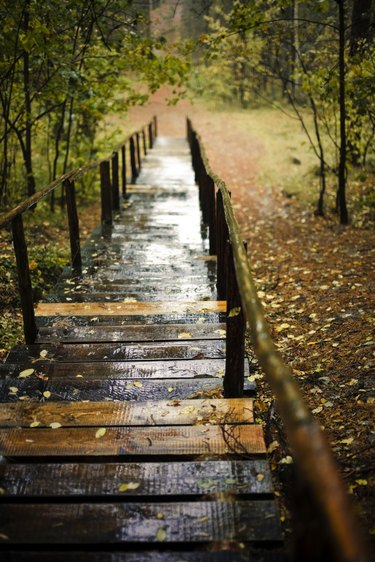
Common environmental factors also affect when leaves fall. The amount of water the trees get, early or late frost, high winds and unseasonable temperatures (both warm and cold) can change the pattern of leaf loss in deciduous trees. Trees that are watered regularly and stand in sheltered areas often hold on to their leaves longer than others of the same species that are in a more exposed setting.